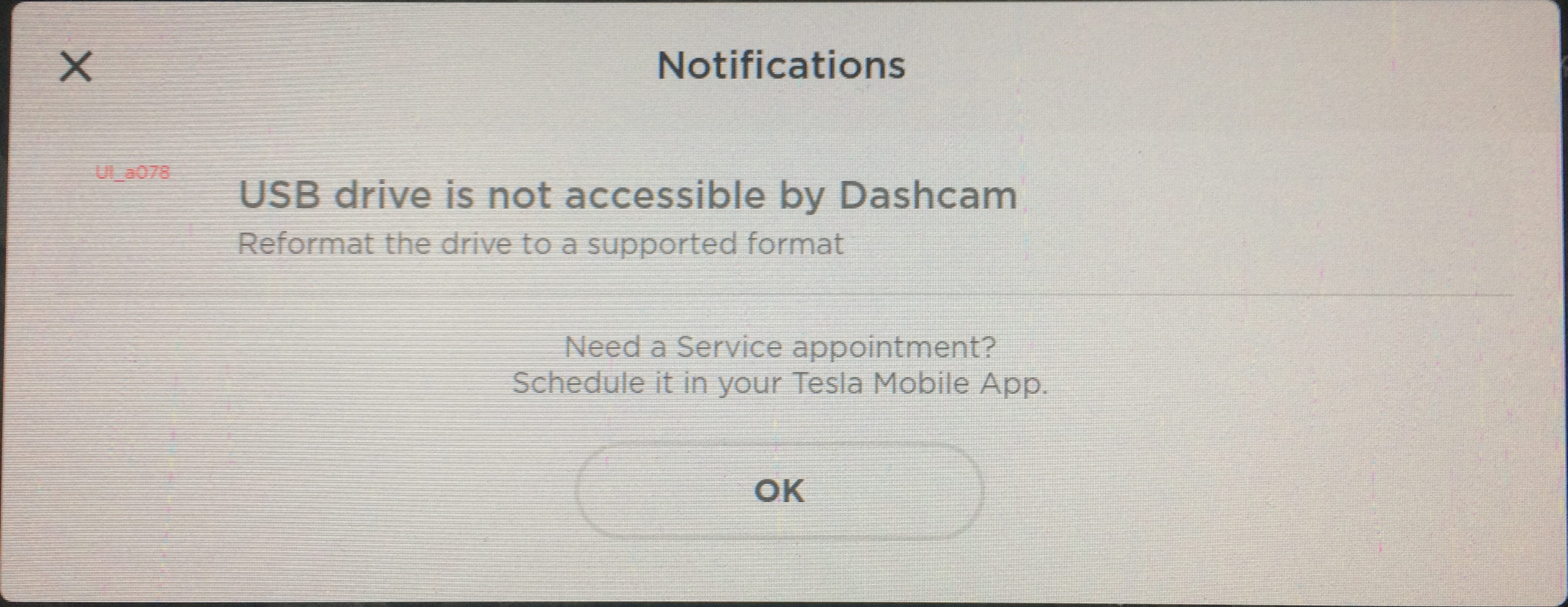The third time’s the charm. After over a week of trying to get the Tesla DashCam to work, a USB Stick arrived yesterday. After again formatting with a GUID Partition Table, a FAT32 file system, and adding the /TeslaCam directory, I plugged it into #CO2Fre.

When I then looked at the screen, lo and behold, the DashCam was restored!

But that wasn’t all! Turns out I also got the 2020.12.6 TeslaOS. Eager to install, I hit the install now button because I knew this update would be adding auto-stop at stop signs and stop lights. The quirk with the update is that it will even stop at green lights, so if you want it to keep going you need to keep your foot on the accelerator to get it to run the green light. It’s probably okay, though, to let it stop on yellow or red. Also, it won’t turn for you; to do that, you need to take control of the wheel.
Finally, once that was installed and Stop at Traffic Lights was activated, I decided to have another go with my 2TB SanDisk Extreme SSD. Because it was also formatted properly and had the same directory structure as the USB Stick, I had a hunch it was because the drive was a whopping 2TB that the Tesla couldn’t recognize it.
With a little work, I re-formatted the drive as GUID, with one FAT32 partition with 996GB and another 1TB of free space. After adding the /TeslaCam directory, it worked like a charm!
In conclusion, although the 2TB SanDisk Extreme SSD drive works with Tesla, Tesla cannot understand drives above at least 1TB. This seems like a failing of the TeslaOS, but one I can live with. After all, my long-term plan is to have a Raspberry Pi Zero W installed and use the 2TB drive for portable backups.
Now that I have my DashCam back, and have the automatic stopping at stop signs, I can’t wait to take #CO2Fre for a spin. I hope to be cruising on a cloud soon!




